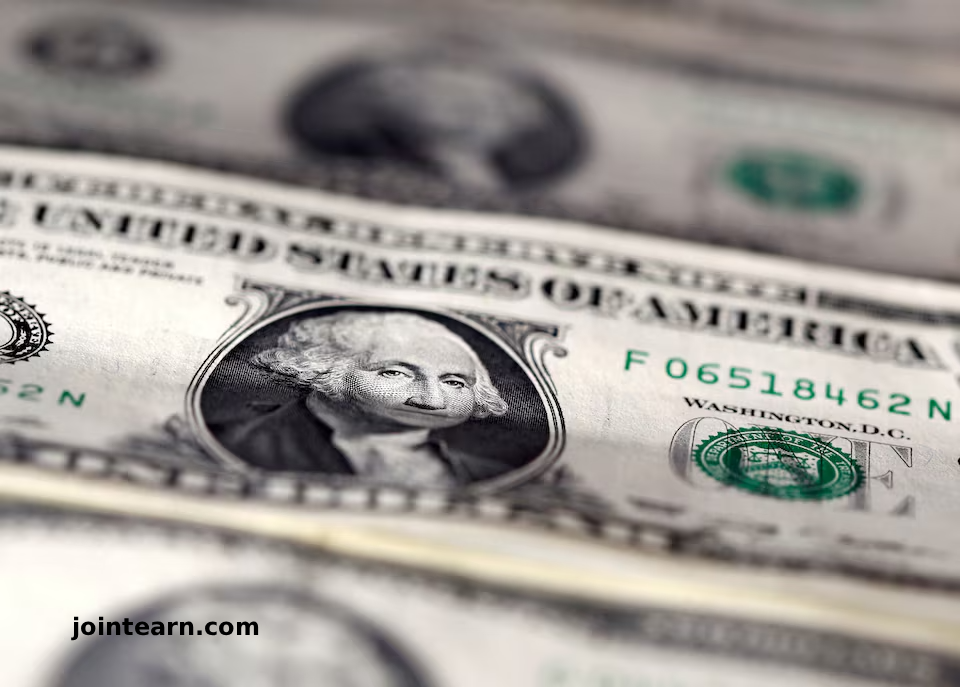
After months of turbulent swings, the U.S. dollar is showing signs of stabilization as the recent frenzy of investor hedging against the currency fades. The slowdown in hedging activity has relieved pressure on the greenback, supporting a gradual recovery from one of its most significant declines in years.
Investor hedging—actions taken to protect U.S. asset holdings from currency depreciation—spiked sharply following the April 2 announcement of sweeping U.S. trade tariffs by President Donald Trump, an event dubbed “Liberation Day.” At the time, foreign investors faced declining stock and bond prices, alongside a plunging dollar, prompting them to hedge aggressively.
However, recent data suggest that these hedging flows have decelerated, reflecting growing confidence in the dollar’s stability.
Dollar Hedging Trends and Investor Behavior
David Leigh, Nomura’s global head of FX and emerging markets, highlighted the shift:
“The conversations we’re having with clients now suggest that these flows are less likely to materialize imminently, compared with the heightened hedging activity we saw earlier this year.”
The U.S. Dollar Index, which measures the greenback against a basket of major currencies, has rallied nearly 4% since late June. This recovery comes after the dollar experienced losses of almost 11% in the first half of the year—the largest drop since the early 1970s.
Although hedging activity remains higher than historical averages, it has retreated from the peaks observed immediately following the tariff announcements, suggesting investors are less anxious about further declines.
Custodian Data and Market Analysis
Data from major custodians provide insights into the evolving hedging landscape:
- BNY Mellon reports that clients were heavily long in U.S. assets in early 2025, indicating low expectations for additional dollar weakness. Hedging activity has increased since April but remains below late-2023 levels.
- State Street shows that foreign equity managers hedged 24% of their U.S. holdings as of October, a modest rise from February, and below previous highs of 30%+.
- Geographic variations are evident. A survey by National Australia Bank found minimal changes in hedging among Australian pension funds, while Danish pension funds’ hedging activity stabilized after increasing post-April.
Columbia Threadneedle’s CIO, William Davies, noted that some investors have begun unwinding hedges, betting the dollar will maintain its current levels.
The Mechanics and Costs of Dollar Hedging
Hedging can significantly impact currency movements. Selling dollars to protect against declines can create feedback loops, further driving currency depreciation. However, the feared “snowball effect” of early 2025 did not materialize, according to Paul Mackel, HSBC’s global head of FX research.
Cost remains a critical factor in hedging decisions. For example, Japanese investors pay around an annualized 3.7% to hedge against dollar weakness, while euro-based investors face a 2% cost. Investors weigh these costs against the potential protection gained from hedging.
Correlations, Market Strategies, and Future Outlook
Traditionally, the dollar strengthens when stock markets fall, naturally offsetting some foreign investor exposure. This correlation did not hold during the April sell-off, which triggered a surge in hedging. Today, the dollar has held steady even as equities declined, reducing urgency for new hedges.
Fidelity International advises Europe-based investors to gradually target 50% hedging of their dollar exposure, a complex process that may involve governance adjustments and benchmark considerations. Nomura’s Leigh added:
“There’s still lots of scope for dollar investments to be hedged, but whether and how quickly this will happen remains uncertain.”
BlackRock reports that 38% of U.S. equity ETF flows into Europe, the Middle East, and Africa in 2025 were into FX-hedged products—a notable increase from 2024, when 98% of flows were unhedged—indicating evolving investor attitudes toward currency risk.
Conclusion
The deceleration of the dollar hedging frenzy marks a positive signal for the U.S. currency, offering relief to investors and supporting a gradual recovery in the greenback. While costs, correlations, and market behavior will continue to shape hedging strategies, the trend suggests that foreign investors are cautiously regaining confidence in U.S. assets.

Leave a Reply